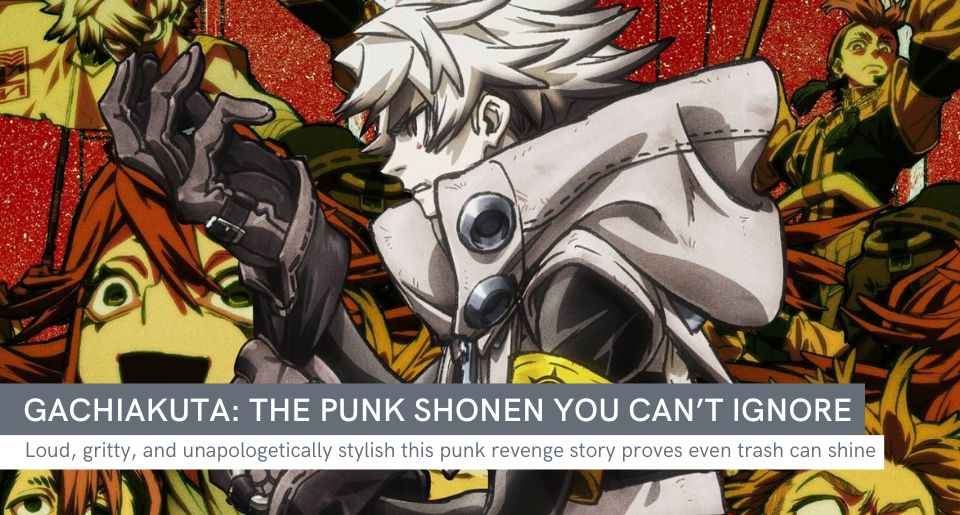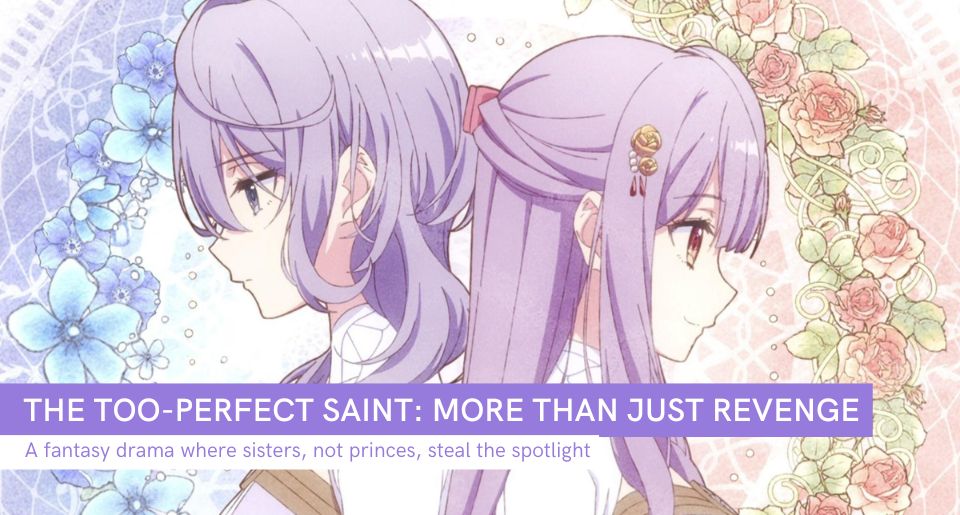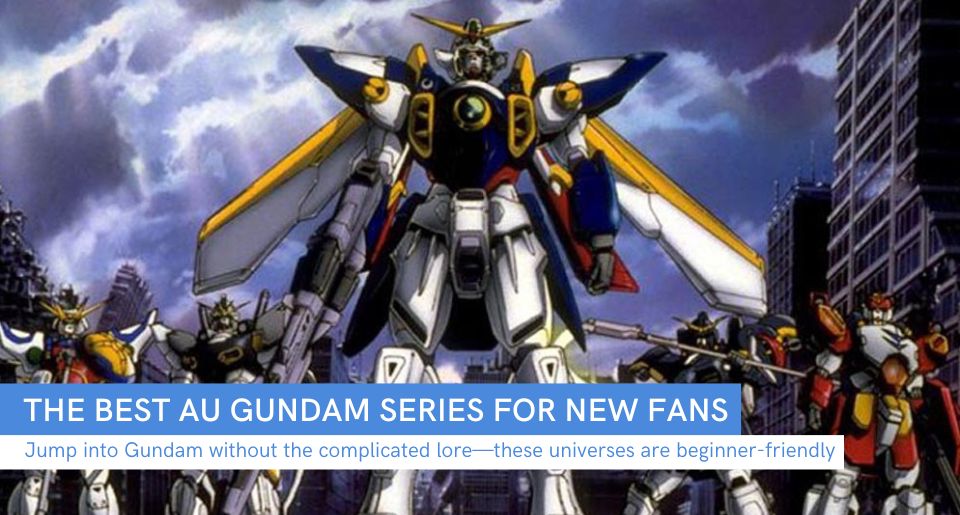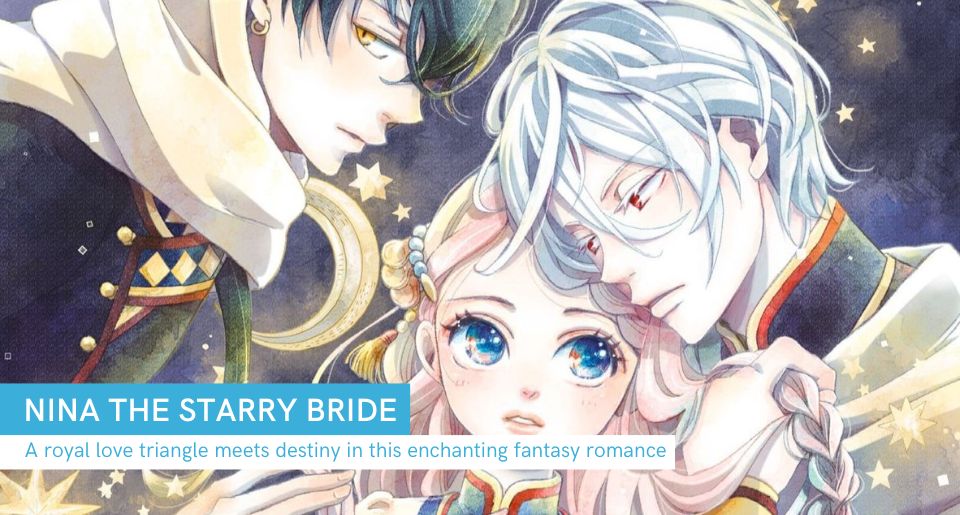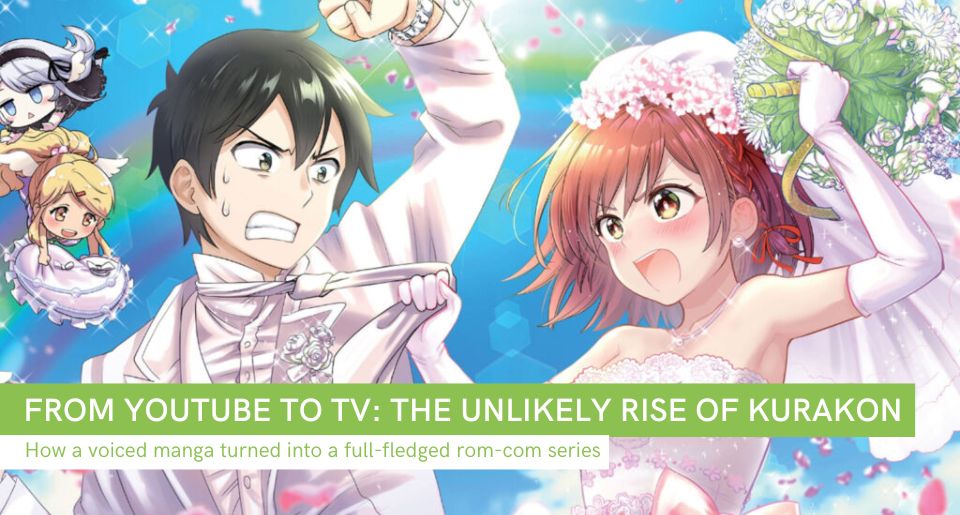Every so often, a new shonen series shows up and feels like a shot of adrenaline to the genre. Gachiakuta is exactly that. It’s loud, grimy, unapologetically stylish, and it just so happens to be about trash. Yes, trash. But don’t let the premise fool you—this is easily one of the most exciting and creative battle shonen of the new generation.
Created by Kei Urana, Gachiakuta started serialization in Weekly Shonen Magazine back in February 2022. The manga quickly picked up traction thanks to its jaw-dropping art style, unique setting, and high-energy fights. Fast forward to now, and it has an anime adaptation by Studio Bones that premiered last July. And trust me, it’s been anything but trash.
The World of Trash and Class Divide
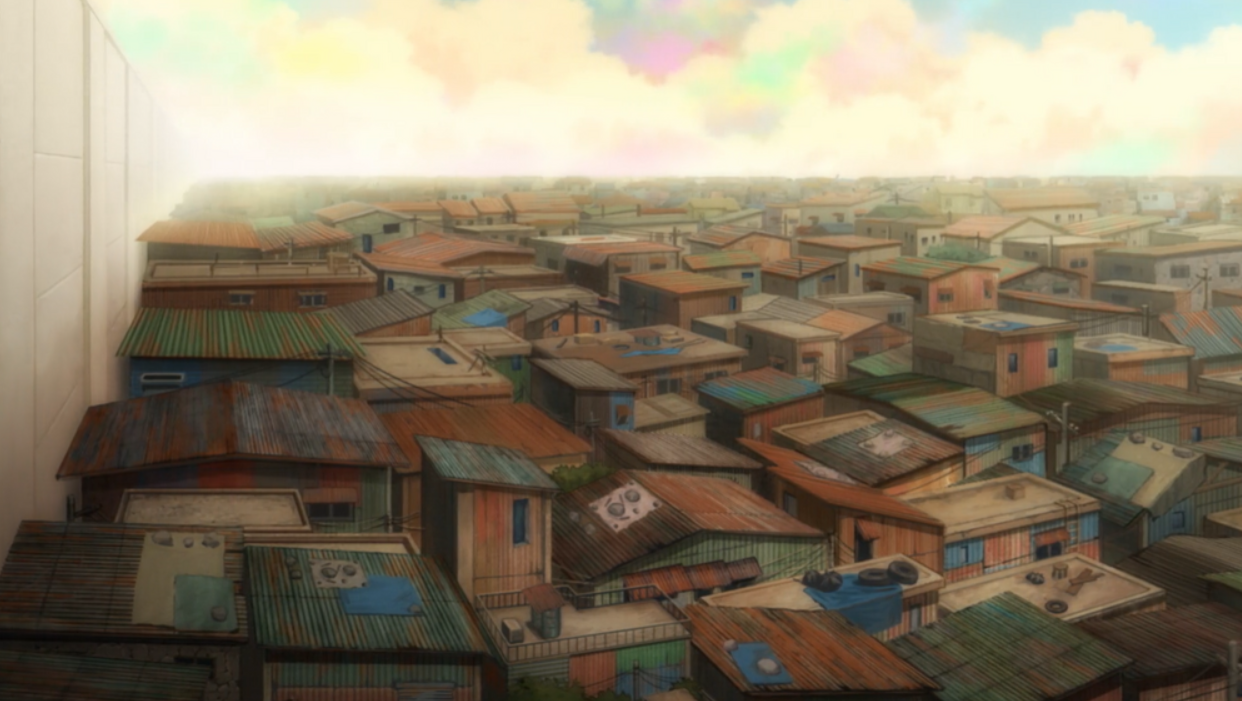
The slums in the Sphere. This is where Rudo lived before he was thrown into the “Pit.”
The world of Gachiakuta is split between two very different places: the Sphere above and the Ground below. The Sphere is a massive floating island in the sky where humanity fled over a century ago. Like the walled cities in Attack on Titan, life inside the Sphere is divided by towering barriers: the rich live safely in the central districts with clean streets and endless resources, while the poor are pushed to the outer slums, surviving off scraps and leftovers. For the wealthy, trash is something to toss away without a second thought. For those in the slums, it’s survival.
This is where Rudo lives. Branded an outcast because he’s the son of murderers, he’s raised by his kind foster father Regto, the only person who truly believes in him. Rudo also has an unusual obsession: he treasures trash. He sneaks into the upper districts of the Sphere to salvage discarded items, repairing and repurposing them back in the slums. What others see as worthless, he sees as meaningful—a theme that runs deep in his journey.
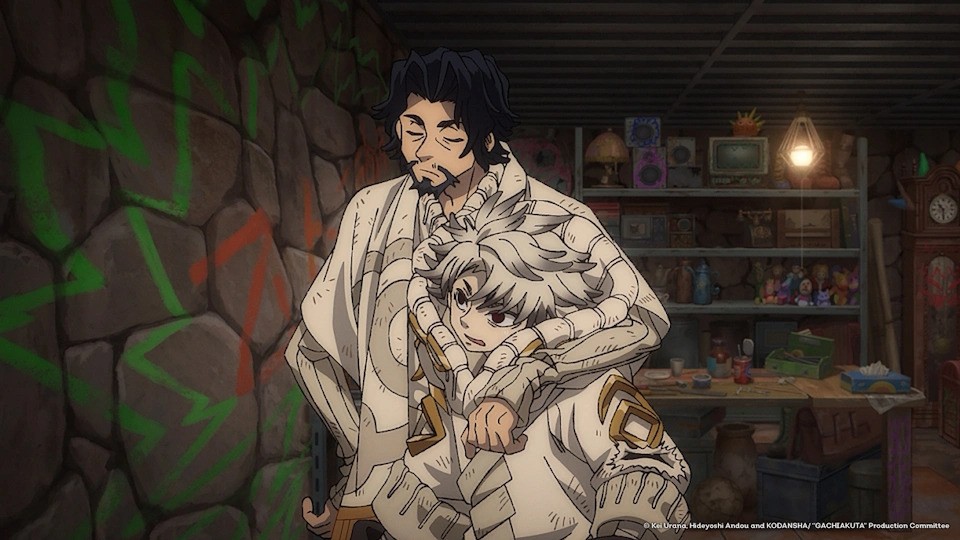
Rudo with Regto, his foster father.
But tragedy strikes when Rudo returns home to find Regto murdered. Instead of justice, he’s accused of the crime himself. In a cruel twist, even his crush Chiwa turns against him. The punishment is brutal: Rudo is cast into the Pit, the massive chasm beneath the Sphere where trash and criminals alike are thrown away to be forgotten. Before he falls, he swears vengeance on the true killer and everyone who betrayed him.
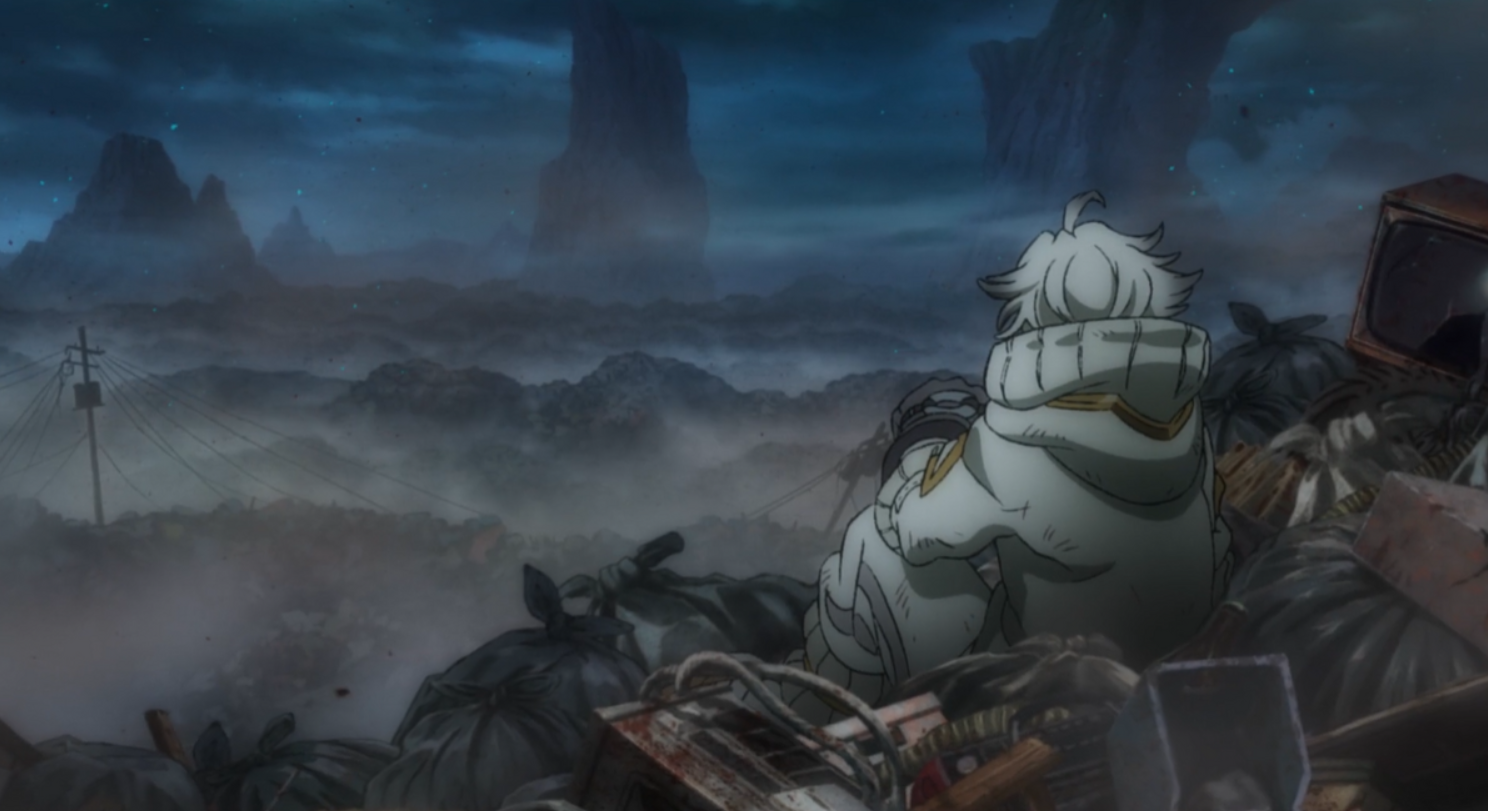
The Ground, also known as the “Pit”, where Sphereites throw their trash and criminals, believing that place is uninhabited.
Down in the Pit, Rudo discovers that the Ground is far from lifeless. It’s a hostile, polluted wasteland where centuries of dumped garbage have created monstrous trash beasts and entire warped ecosystems. Amid this danger, Rudo is saved by a mysterious fighter known as a “Cleaner”, one of the few capable of fighting back against the Trash Beasts. With no other choice, Rudo begins carving a path through this strange and deadly world—his eyes still set on climbing back to the Sphere and exacting revenge.
Life in the Pit
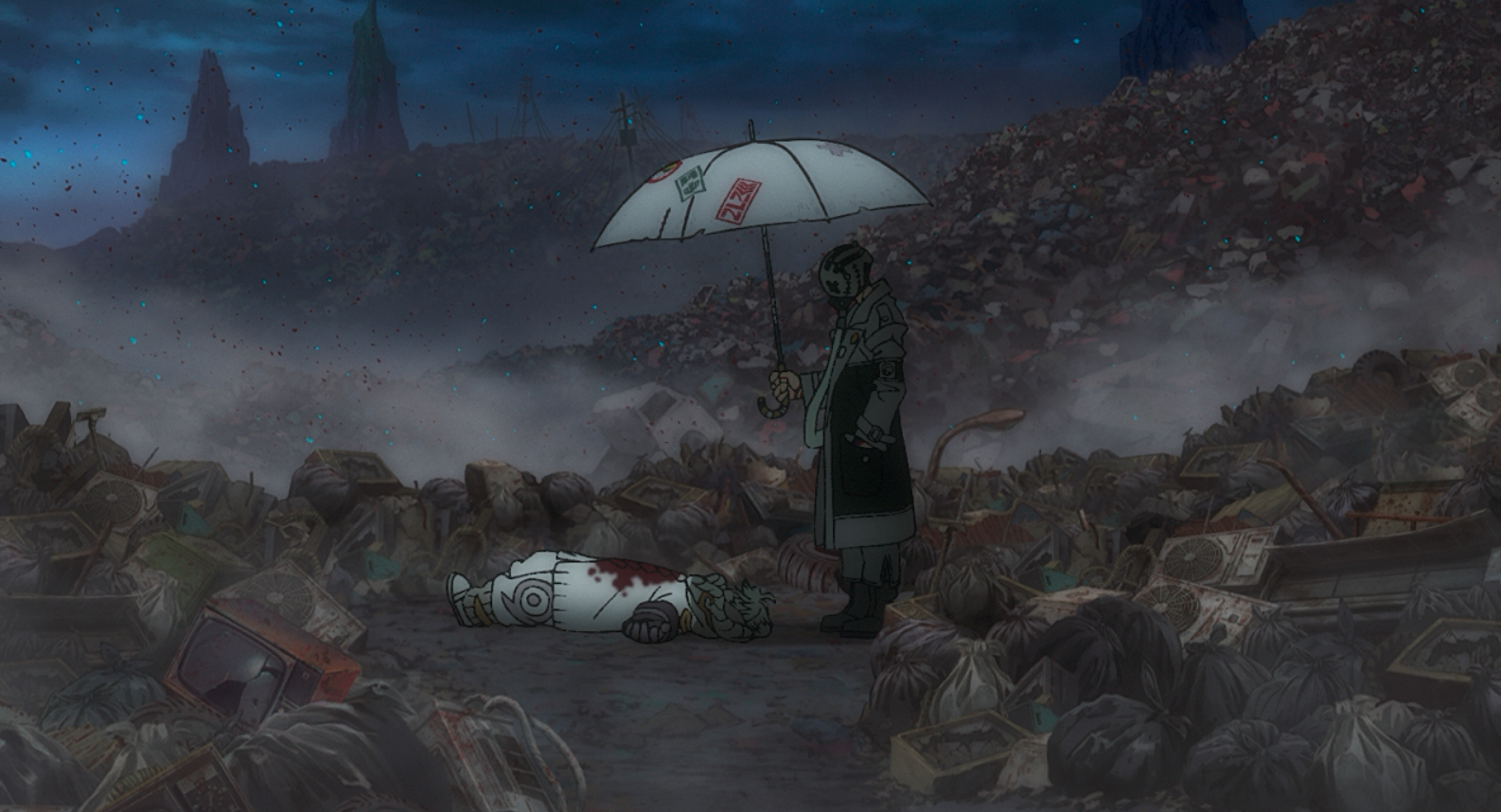
Rudo meets Enjin, who invites him to become a “Cleaner.”
Rather than being endless nothingness, the Ground is a terrifying new world—an infinite landfill teeming with monsters, danger, and mystery. It’s a place where discarded objects come to life in horrifying ways, creating grotesque trash beasts that stalk its landscape. Rudo is barely able to survive his fall until he’s saved by a mysterious “Cleaner” named Enjin.
Cleaners are fighters who wield supernatural weapons forged from the essence of beloved objects, and they’re the only ones capable of handling the twisted monstrosities that roam the Ground. Enjin recruits Rudo into their ranks, giving him both a new purpose and a possible path back to the surface. With revenge still burning in his chest, Rudo accepts, setting the stage for battles, revelations, and plenty of chaotic energy.
The Anime Adaptation: Studio Bones Delivers
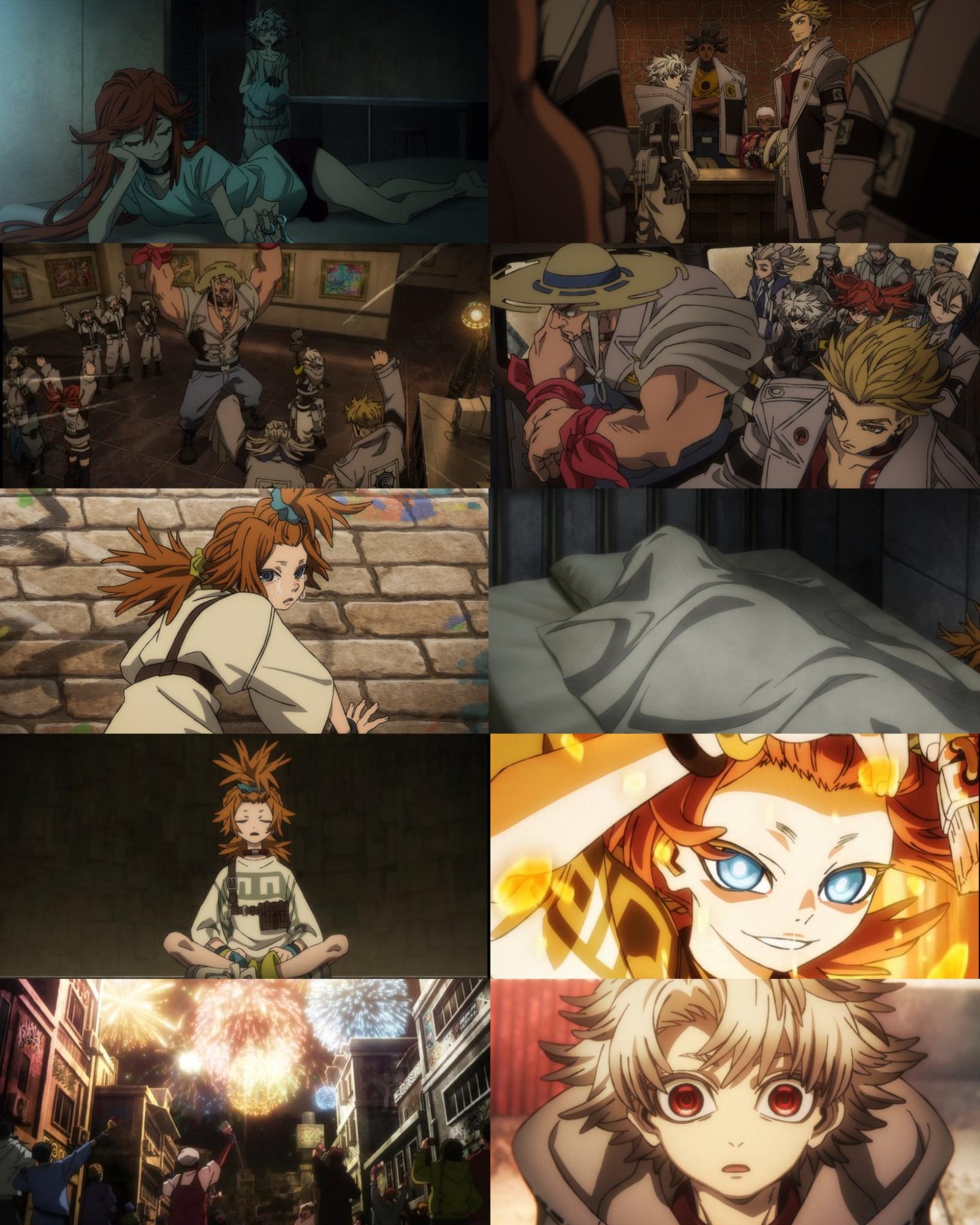
The anime breathed life into the manga, and Studio Bones did that perfectly.
When Bones announced they’d be handling Gachiakuta, expectations went through the roof. After all, this is the studio behind Fullmetal Alchemist: Brotherhood, Mob Psycho 100, and My Hero Academia. They’re no strangers to kinetic, visually distinct action series—and they didn’t disappoint here.
The anime mixes 2D and CG in a way that actually works, blending fluid motion with Urana’s scratchy, chaotic art style. It doesn’t just look clean—it looks alive, jittery, and rough in a way that matches the manga’s raw energy. Add in Taku Iwasaki’s soundtrack—the same genius behind the music in Noragami and Bungou Stray Dogs—and the result is an atmosphere that’s stylish, tense, and punk to its core.
Even just a few episodes in, the adaptation nails the pacing. The first episode sets up Rudo’s backstory and his descent into the Ground with intensity, ending on a hook that screams: “Welcome to hell, now buckle up.” Each week leaves you wanting more, and while it might not hit the animation highs of Jujutsu Kaisen, Demon Slayer or a Kyoto Animation production, it makes up for it with sheer style and personality.
Why the Manga Is So Good
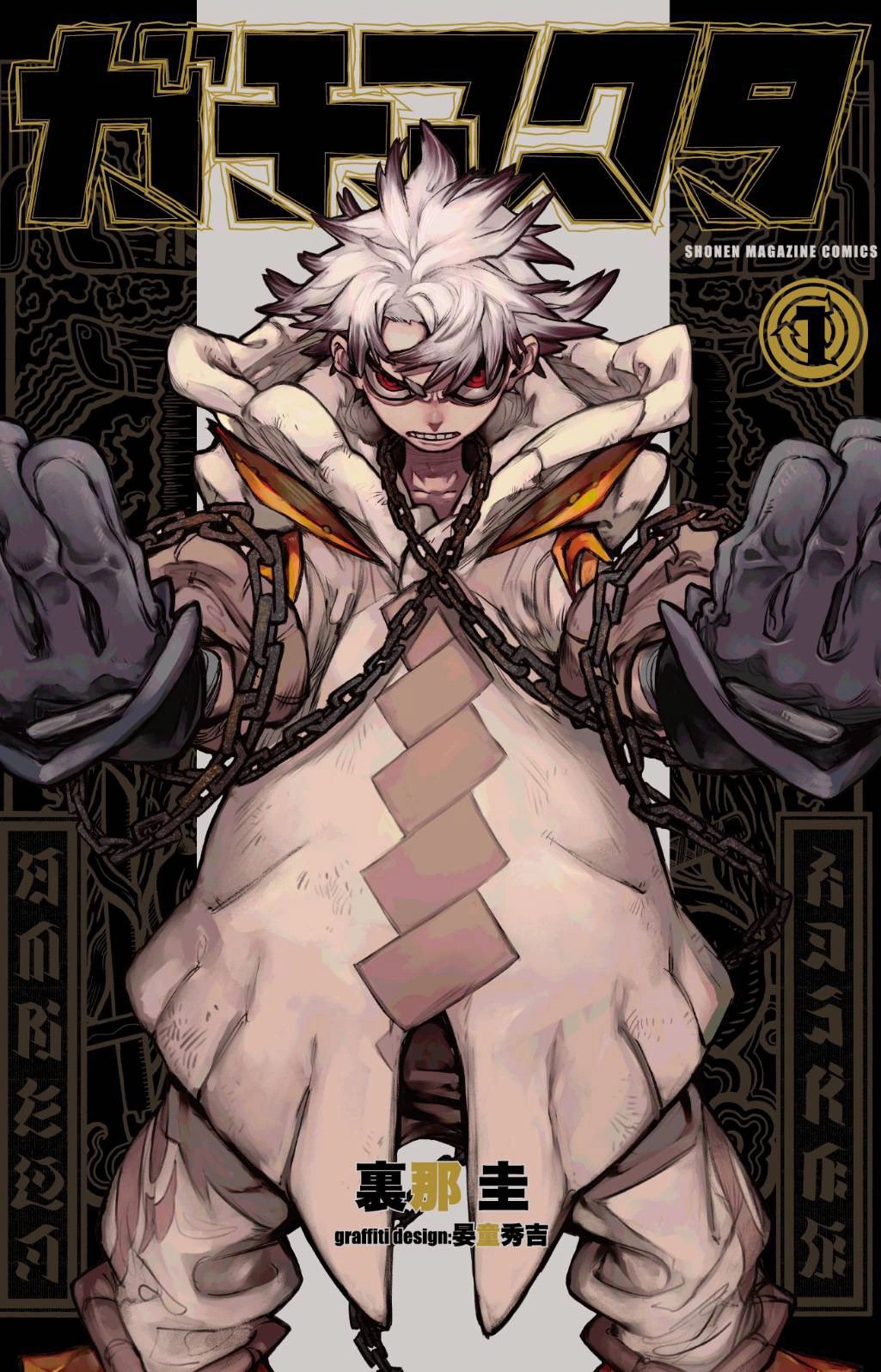
Rudo, as seen in the first volume of the manga.
The anime’s great, but the manga is where you’ll really see why people can’t shut up about Gachiakuta. Kei Urana’s artwork is on a whole other level for a weekly series. The lines are messy but purposeful, scratchy yet detailed, creating a gritty sketchbook vibe that feels perfect for a world built on garbage. Characters are exaggerated and cartoony in expression but grounded in anatomy—you can see the bones, muscles, and weight of every movement.
Action scenes explode off the page. They’re chaotic, dynamic, and choreographed in ways that feel closer to dance battles than traditional fights. One character literally fights while breakdancing with giant scissors, and it somehow works flawlessly. Panels are full of speed lines, wild angles, and kinetic energy, yet everything remains easy to follow. Reading a fight in Gachiakuta feels like watching animation in motion.
Riyo fights using her giant scissors, which is quite a unique weapon in battle shounen.
And the designs? Absolutely unmatched. Characters dress like punk cybergoth survivors with early 2000s nu-metal flair—chains, zippers, goggles, spiky hair, and all. It’s messy, stylish, and effortlessly cool, perfectly fitting the junkyard aesthetic. Even the monsters look like nightmares pieced together from discarded items, adding to the unsettling beauty of the world.
A Story About More Than Just Trash
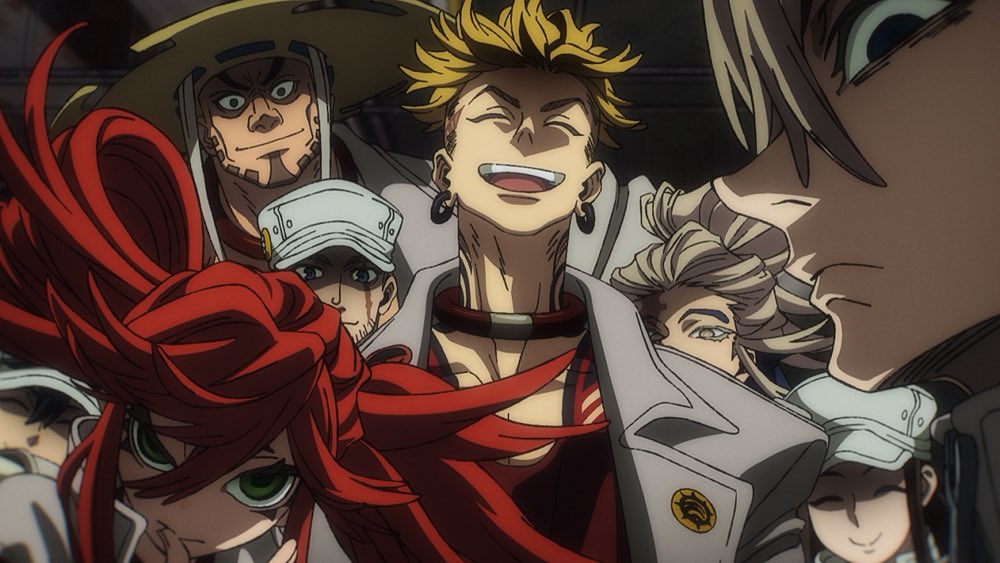
The Cleaners.
Underneath all the grit and chaos, Gachiakuta has heart. The core power system revolves around Anima, the life energy within objects that have been cherished and used. Fighters known as Givers can unlock this energy and transform their beloved items into weapons, called Jinki. It’s a clever system—simple to understand but with limitless possibilities for creative battles.
But it’s not just cool for the sake of being cool. The idea ties directly into the manga’s themes about materialism, consumerism, and the way people treat objects—and, by extension, each other. A story about trash ends up being about value, memory, and connection. The fights are wild and flashy, yes, but they also carry emotional weight because the weapons themselves are tied to what the characters hold dearest.
Why You Should Be Paying Attention
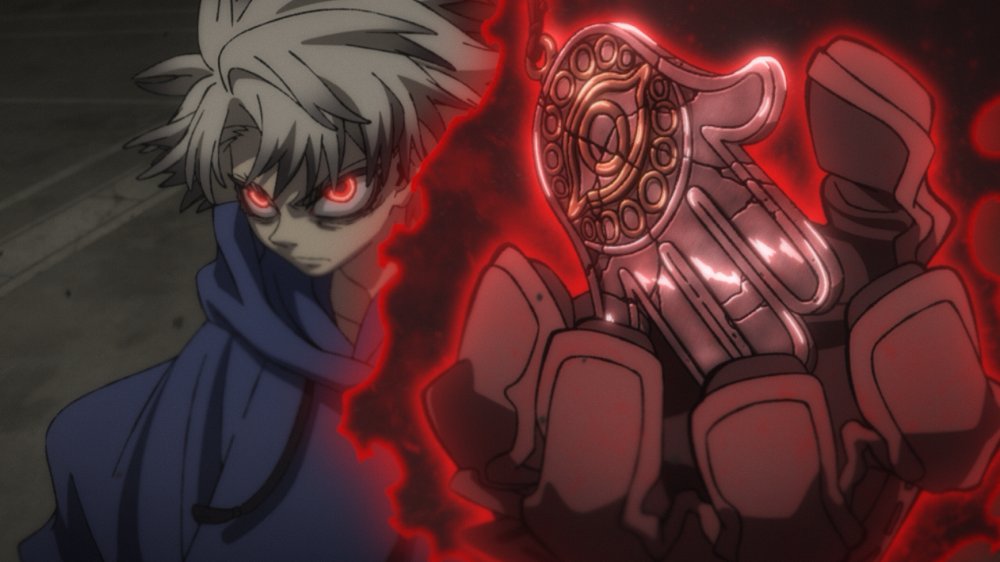
Rudo using his powers to defeat an enemy.
We’re in a new era of shonen with giants like Jujutsu Kaisen and Demon Slayer, but Gachiakuta is carving out its own lane—punk, chaotic, and unapologetically stylish. If you’re into revenge stories, wild power systems, and a series that drips personality from every panel, this is it.
The anime by Bones cranks everything up, making it one of Summer 2025’s standouts. Loud, dirty, stylish, yet surprisingly emotional, Gachiakuta hits hard and doesn’t let go. Kei Urana’s manga is already on its way to modern classic status—and the anime only seals the deal.
It may be about trash, but Gachiakuta is anything but garbage.
【ENG】Gachiakuta Anime Series Teaser PV/Set for Release in July 2025
Gachiakuta Opening | "HUGs" by Paledusk
What do you think?
Who really killed Regto?
Will Rudo ever make it back to the surface?
Will Rudo ever get the revenge he swore for Regto?
Let us know in the comments or drop us a line on social media: X (formerly Twitter), Instagram, Facebook! We’d love to hear from you!
ZenPlus is your one-stop shop for all things Japanese. Check out our marketplace for manga volumes, cosplay, figures, and other merch from the Gachiakuta franchise!
You can watch Gachiakuta on AniOne Asia, Bilibili, Netflix, Crunchyroll and Prime Video.
About the Writer
Cristy is a freelance artist and writer who has been obsessed with anime and manga since childhood. Her love for these imaginative worlds fuels her creative endeavors, and she shows no signs of stopping anytime soon.

